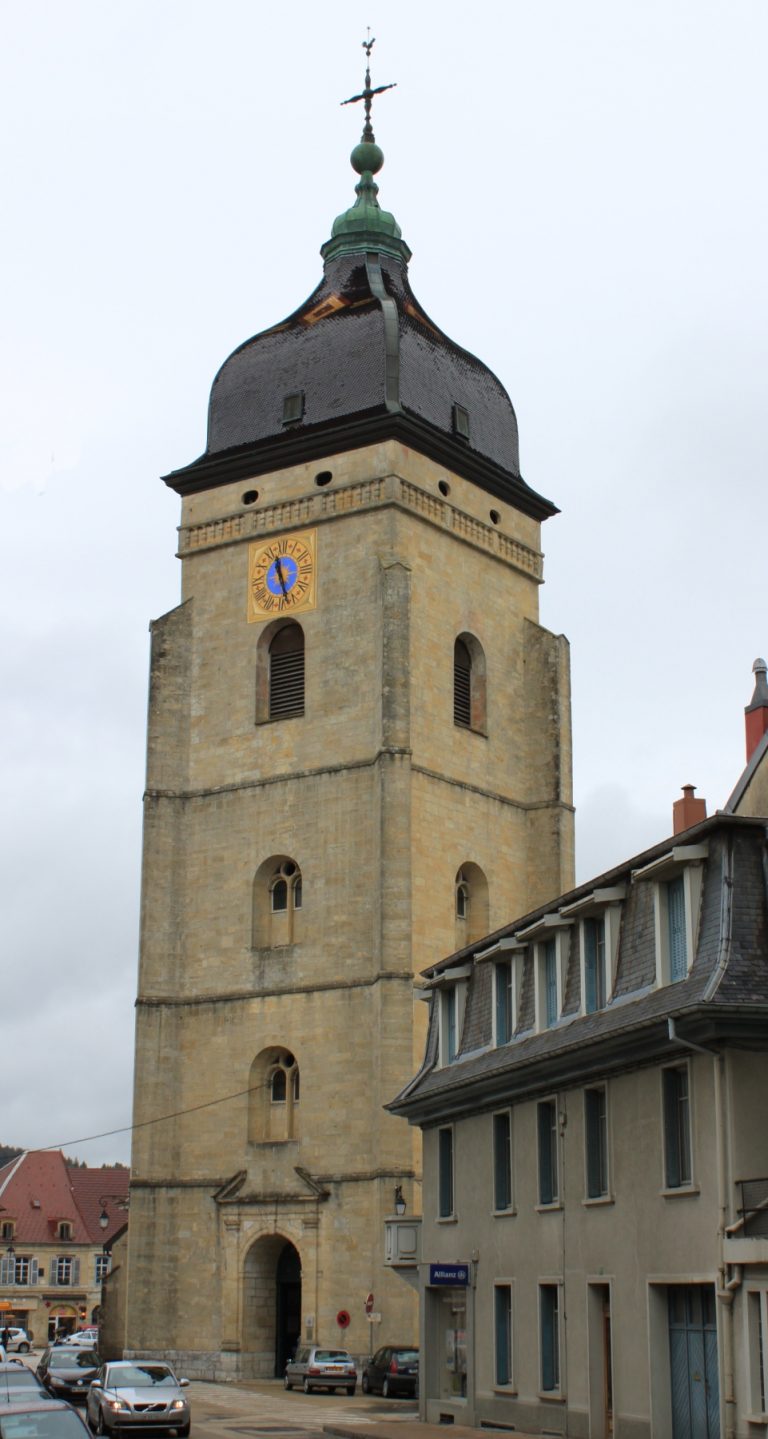The church could have been built before the 11th century but there remains no architectural element of the original building able to attest to this ancient existence. The current buildings are the result of successive alterations, transformations or restorations in the 17th, 18th and 19th centuries. The north side portal, from the 15th century, is the oldest element.
The current building was rebuilt in the 17th century after being almost completely destroyed during the capture of Pontarlier by the Swedes in 1639, then by a new fire in 1680 and finally in the great fire of Pontarlier in 1736. The first reconstruction, which today would be described as identical, was undertaken in 1651. The Saint-Bénigne church was enlarged at the beginning of the 19th century, restored in 1874 after the war of 1870, enlarged again in 1920 after the First World War, then underwent a very important restoration in 1970. Finally, in 1974 the old stained glass windows were removed and replaced by stained glass windows made according to the drawings of painter Alfred Manessier. The organ, installed by organ builder Saumet in 1759, was modified for the first time in the 19th century by brothers Joseph and Claude Ignace Callinet and then one again in 1982.
Saint-Bénigne church, formerly surrounded by the cemetery, today consists of a bell tower-porch (built in 1652, demolished in 1680, rebuilt in 1681) covered by an imperial roof (1753); it is flanked by a tower housing the staircase leading to the bell tower, the former watchman’s room, the bell room and the clock. This bell tower-porch opens onto a nave with three naves (a central nave and two side aisles lined with 4 side chapels and a choir (1809). Ridged vaults in the nave, ribbed vaults for the bell tower- porch, groined vaults and ribbed vaults for the chapels, flat ceiling for the choir, the centuries juxtaposed the solutions brought to the vaulting according to fashion, to the detriment of general unity.
Note, in terms of furniture: the preaching pulpit (M. H.) made in 1754 by the Guyon brothers, carpenter-sculptors; the main altar, in Jura stone, by Irène Zack (1970); a Virgin and Child sculpted in polychrome wood, called the Virgin of Lausanne (15th century); a Black Madonna and Child (1690); a crucified Christ without the cross (16th century); a recumbent dead Christ (17th century), carved in polychrome wood (M.H.); a painting representing the lactation of Saint-Bernard by the Virgin (17th century); a painting, Jesus in the Garden of Olives (M.H. 17th century). We also find mention in certain archive texts of a rood screen which has now disappeared.
GPS : 46,902162 / 6,356541

